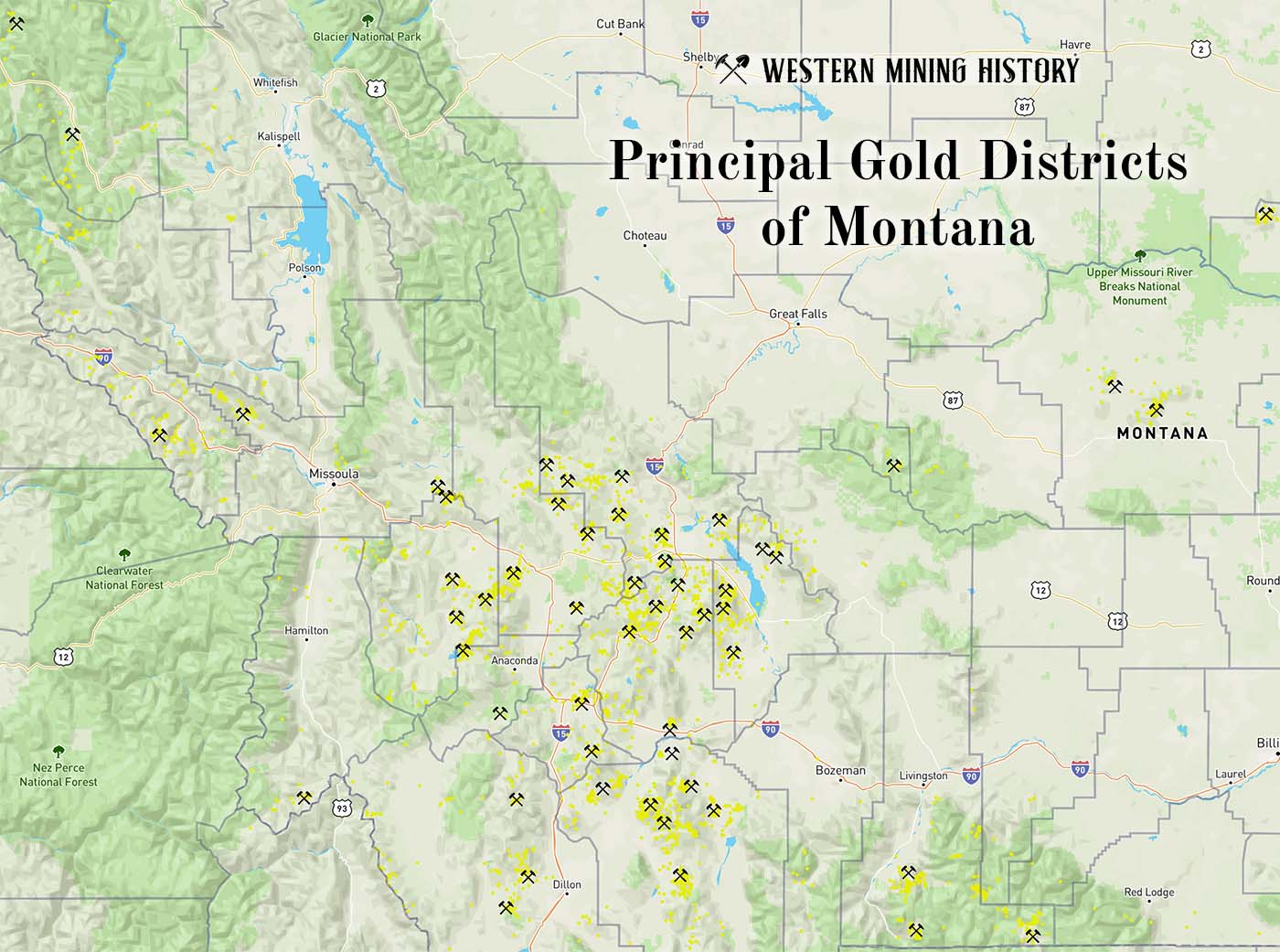The Lee Mountain is a silver and gold mine located in Lewis and Clark county, Montana at an elevation of 5,801 feet.
About the MRDS Data:
All mine locations were obtained from the USGS Mineral Resources Data System. The locations and other information in this database have not been verified for accuracy. It should be assumed that all mines are on private property.
Mine Info
Elevation: 5,801 Feet (1,768 Meters)
Commodity: Silver, Gold
Lat, Long: 46.48528, -112.25000
Map: View on Google Maps
Lee Mountain MRDS details
Site Name
Primary: Lee Mountain
Commodity
Primary: Silver
Primary: Gold
Secondary: Zinc
Secondary: Lead
Tertiary: Arsenic
Tertiary: Antimony
Location
State: Montana
County: Lewis and Clark
District: Rimini District
Land Status
Land ownership: National Forest
Note: the land ownership field only identifies whether the area the mine is in is generally on public lands like Forest Service or BLM land, or if it is in an area that is generally private property. It does not definitively identify property status, nor does it indicate claim status or whether an area is open to prospecting. Always respect private property.
Holdings
Not available
Workings
Type: Underground
Ownership
Owner Name: Cooper, A. T., Mgr.
Home Office: Box 362 Helena, Mt 59601
Production
Year: 1938
Time Period: 1934-1938
Material type: AU
Description: Cp_Grade: ^ 15-30 Oz/Ton Ag
Year: 1924
Material type: ORE
Description: Ap_Grade: ^0.12 Oz/Ton Au, 14 Oz/Ton Ag, 8 % Pb, 4 % Zn
Year: 1904
Time Period: 1902-1904
Material type: ORE
Description: Cp_Grade: ^0.25-0.5 Oz/Ton Au
Year: 1891
Material type: ORE
Description: Ap_Grade: ^0.5 Oz/Ton Au, 11.6 Oz/Ton Ag, 6% Pb
Deposit
Record Type: Site
Operation Category: Past Producer
Operation Type: Unknown
Year First Production: 1864
Discovery Year: 1864
Discovery Method: Ore-Mineral In Place
Years of Production:
Organization:
Significant: N
Deposit Size: S
Physiography
General Physiographic Area: Rocky Mountain System
Physiographic Province: Northern Rocky Mountains
Mineral Deposit Model
Not available
Orebody
Form: IRREGULAR
Structure
Type: R
Description: Boulder Batholith
Type: L
Description: Postmineral North - South Faults Dipping 80 Deg W Displacement Horizontal Offset 20 Feet Each, To Westlee Mountain-Valley Forge Shear Zone
Alterations
Alteration Type: L
Alteration Text: Intense Sericitization Of Quartz - Monzonite
Rocks
Name: Quartz Monzonite
Role: Associated
Age Type: Host Rock
Age Young: Late Cretaceous
Name: Quartz Monzonite
Role: Associated
Age Type: Associated Rock Unit
Age Young: Late Cretaceous
Name: Quartz Monzonite
Role: Associated
Age Type: Associated Rock
Age Young: Late Cretaceous
Analytical Data
Analytical Data: FROM LOWEST TUNNEL: $2-4/TON AU; 20 OZ/TON AG, 10 % PB;
Materials
Ore: Galena
Ore: Sphalerite
Ore: Tetrahedrite
Ore: Gold
Gangue: Pyrite
Gangue: Tourmaline
Comments
Comment (Location): ALTITUDE APPROXIMATE, LOCATION FROM U. S. GEOLOGICAL SURVEY PROF. PAPER 428 , PLATE 1 ; INFO FROM LAND.ST :(1950)
Comment (Production): REYNER AND TRAVERMAN REFERENCE INDICATES PRODUCTION OF 33,323 DOLLARS OF ORE IN 1948. ABOUT $1.5 MILLION PRODUCED PRIOR TO 1913
Comment (Workings): 7 MAIN LEVELS CAVED, FLOODED SHAFT ON LEVEL 7,
Comment (Geology): U. S. GEOLOGICAL SURVEY PROF. PAPER 428 HAS WITHIN IT A PLATE NO. 1 WHICH CATEGORIZES OR DIFFERENTIATES WITHIN THE BOULDER BATHOLITH AND MAPS THIS AREA AS, A MEDIUM GRAINED DARK GRAY BIOTITE-HORNBLENDE GRANODIORITE.
Comment (Deposit): STRIKE AND DIP FIGURES PERTAIN TO SHEAR ZONE WITHIN WHICH THE ORE DEPOSITS OCCUR. ON LEVEL 7 THE VEIN IS MADE UP OF MANY PARALLEL STRINGERS, VEINS, AND LENSES WHICH ARE AS MUCH AS 10 FT WIDE IN A ZONE 60 FT WIDE. MOST VEINS AND LENSES STRIKE NE, THE VEIN IS CUT BY MANY NE, E AND NW-TRENDING FAULTS.
References
Reference (Deposit): USGS PP 428, P. 55
Reference (Production): USGS PP 428, P. 55.
Reference (Deposit): USGS BULL 842, P. 83-84
Reference (Deposit): MBMG MEM 31, P. 56
Reference (Deposit): USGS BULL 842, P. 255-57.
Principal Gold Districts of Montana

In Montana, 54 mining districts have each have produced more than 10,000 ounces of gold. The largest producers are Butte, Helena, Marysville, and Virginia City, each having produced more than one million ounces. Twenty seven other districts are each credited with between 100,000 and one million ounces of gold production. Read more: Principal Gold Districts of Montana.